|
 Boomerang Boomerang
First Data Release: July 21, 2005 We have released the first round of data from the 2003 flight. This round of papers currently includes an instrument paper, the temperature and polarization spectra, and the results from cosmological parameter estimation. The papers may be obtained from arXiv.org, while both the papers and the data are posted on the collaboration web sites in North America and in Italy. 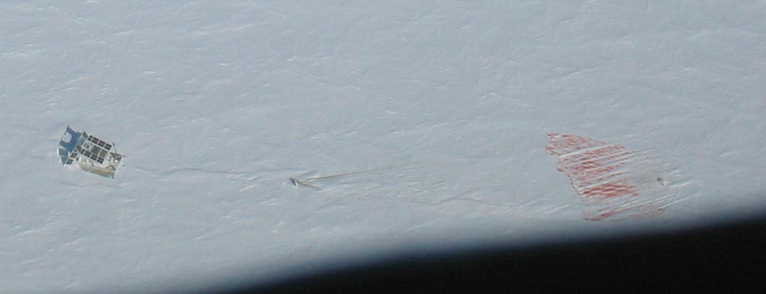
- Click here and here for daily web-logs of our activities in the field
- You can also see the track of Boomerang's Antarctic flight
- Be sure to check out the Boomerang web sites at Case Western and at La Sapienza
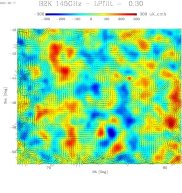
Temperature and polarization anisotropies as seen by Boomerang 2003. The inflight performance of B2K was exceptional, with each 145GHz receiver achieving an NET of 200 uKrts for a single polarization.
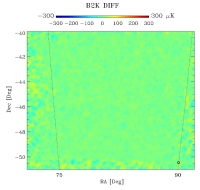
A map of the Stokes Q parameter as seen by Boomerang 2003. The color scaling is identical to the temperature plot above, emphasizing the tiny amplitude of the polarized signal.
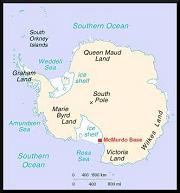
The Antarctic continent. Our highbay is approximately 13km East of McMurdo Station, at 77 deg 51.63' S Latitude, 167 deg 04.27' East.

The volcano Mount Erebus, as seen from Castle Rock, on Ross Island, Antarctica.
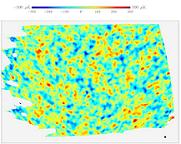
Temperature Fluctuations in the Cosmic Background Radiation, as measured by Boomerang in 1998.

The Principal Investigator of the Boomerang project.

|
- Mission Status
- Boomerang has landed in a remote region of the Antarctic Plateau. The data vessel has been successfully recovered, and plans are in the works to recover the payload next season. Approximately 12 days of useable data were obtained, with excellent receiver perfomance. The analysis has begun! Click here for some tantalizing images from some of the data. The Boomerang team is extremely excited about the data, and equally grateful for the efforts of the NSBF and NSF personnel which have made this season a success.
- Background
- The continuing mission of the Boomerang project is to study the properties of the Cosmic Microwave Background radiation (CMBR). Although the existence of the CMBR was first predicted in 1948, the radiation was not observed until 1965. This discovery, by Arno Penzias and Robert Wilson at Bell Laboratories, was completely
inadvertent - the cosmological significance of the discovery was largely lost on the two researchers, who were attempting to develop commercial technology. The scientific interpretation of the result was published simultaneously by Dicke, Peebles, Roll, and Wilkinson who had been collaborating on a dedicated experiment to detect this relic radiation just as Penzias and Wilson made their discovery. Today, we continue to design and build instruments in the spirit of both of these pioneering research groups - we strive to provide observational tests of existing theories, while keeping a keen eye out for unanticipated phenomena.
- The Cosmic Microwave Background is essentially the afterglow of the Big Bang. The preponderance of the observational evidence indicates that about 14 billion years ago the observable Universe was a small fraction of the size that it is today. As a result, the Universe would have been a very dense and hot place to be - far hotter than anything on Earth today, hotter even than our Sun! Therefore, one can think of that early epoch as a sort of explosion, or Big Bang.
- Since those early times, the Universe has been expanding and, therefore, cooling. Today the Universe is a cold place, just 2.7 degrees Celsius above absolute zero (water freezes at a temperature 100 times hotter than this!) Although the cosmic fireball has been cooling all these years, the glow is still bright enough to be observed. We design, build, and operate instruments designed to collect information about this afterglow. When interpreted through the scientific formalism of modern relativistic cosmology, these data provide a wealth of information regarding the basic structure of our Universe.
- Boomerang '98
- After over five years of development Boomerang made its first long duration balloon flight above Antarctica in 1998. The '98 instrument consisted of sixteen unpolarized detectors which operated at four different wavelengths, or colors. At the time of its release, the data from this flight was of unprecedented quality. The instrument's sensitivity, frequency coverage, and angular resolution allowed the unambiguous measurement of temperature fluctuations in the cosmic microwave background over a broad range of angular scales.
- The basic scientific result of this mission is the determination that the Universe appears to be geometrically flat. Within the context of Relativistic Cosmology, beams of light which are initially parallel to one another need not remain so indefinitely. They may either cross, diverge, or remain parallel to one another depending on the fundamental nature of the Universe. In a so-called flat Universe, the beams of light remain parallel.
- One of the major implications of this result is that we have only a very dim understanding of what the Universe is made of. The sort of stuff which is familiar to us all, the elements (Hydrogen, Oxygen, Carbon, Iron, etc.), light, and even more exotic things like neutrinos only account for about 5% of all the stuff of which our Universe is made. The nature of the rest remains a mystery. The fact that the vast majority of the Universe consists of mass and energy which is fundamentally different, but whose nature is otherwise completely unknown, suggests that we have much to learn.
- The release of the WMAP data in 2003 confirmed the cosmological results of the 1998 Boomerang data and provided a much improved measurement of the large angular scale temperature fluctuations. In addition, the WMAP results provided the first unambiguous measurement of the correlation between the temperature and polarization of the CMB at large angular scales.
- Boomerang 2003
- Since 1998 we have completely redesigned the focal plane of the instrument to study the polarization as well as the temperature anisotropy of the CMB. The polarization properties of the radiation, if they are consistent with those predicted by the currently favored lambda-CDM scenario, will provide a direct confirmation that the temperature fluctuations are truly Cosmological in origin. In addition, they allow us to constrain many of the parameters which describe our Universe with higher precision and less degeneracy than is possible through the analysis of the temperature anisotropies alone.
- In addition to the study of the Microwave Background Radiation, Boomerang 2003 will provide the most sensitive survey to date of the intensity, spectrum and polarization of Galactic emission at millimeter wavelengths. Very little is known about the polarization properties of the diffuse emission from the Galaxy at these frequencies. These data will aid in our understanding of the physics of the interstellar medium. While scientifically interesting in its own right, knowledge of the nature of Galactic emission is also necessary in guiding the design of the next generation of CMB polarimeters.
- Boomerang is an international consortium with funding from national agencies in Canada, Italy, the United Kingdom and the U.S.
Within the U.S., the payload development and flight are each
supported by NASA and by NSF. Additional support for the development
of the detector system has been provided by Caltech and JPL.
|
|
 Boomerang
Boomerang






